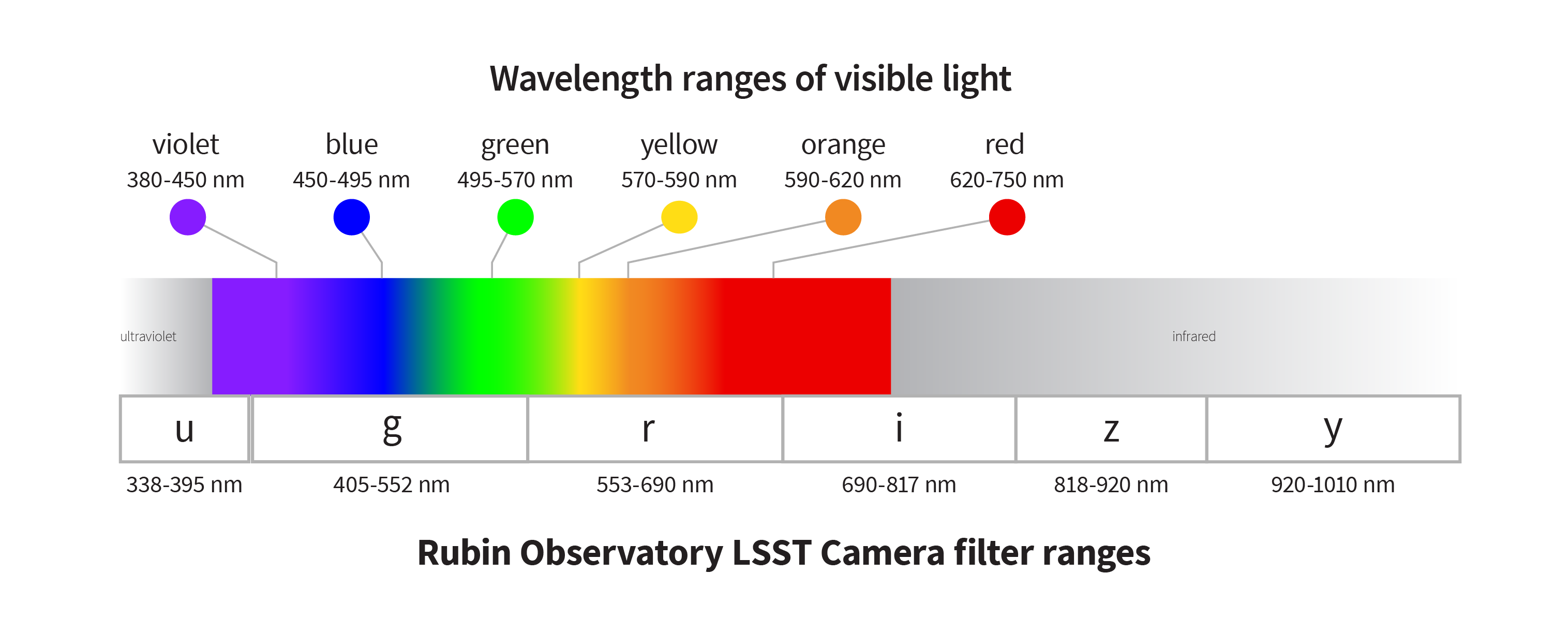Color in Astronomical Images
Astronomers use a particular method for choosing colors when building a color image. It is called chromatic ordering. Images made with chromatic ordering are not simply pretty pictures— each color in the image conveys astronomical information.
When creating images that use chromatic ordering, the colors used must be assigned to the filters in order of their wavelengths. The image produced by the filter that transmits light with the shortest wavelengths must be matched to the color in the image that also has a shortest wavelength. For instance, you might assign the color blue to the g filter image. You would then assign the images made by filters that transmit longer wavelengths of light to colors that correspond with wavelengths longer than blue (like green and red).
All the astronomy images that you have created so far were chromatically ordered, since the shortest wavelength image was colorized blue, the middle wavelength image was colorized green, and the longest wavelength image was colorized red.

If all six filters of the Rubin Observatory camera were used to create a color image, then the image from the u filter (which passes light with the shortest wavelengths) would be colorized violet. The image from the g filter would be colorized blue, since blue is the next shortest wavelength color. Continuing on with this method, the remaining images obtained with other Rubin Observatory camera filters would be colorized as shown below:
| r filter = green | i filter = yellow | z filter = orange | y filter = red |
Usually, not all six filters are needed to communicate the science message of the image. In that case, the images can be assigned any colors as long as they follow the chromatic order method. For example, suppose you have a set of images taken using only these filters: g, r, i, and y. Any of the following sequences shown in the table ("Examples of Chromatic Ordering") would be correct.
Examples of Chromatic Ordering
| g | r | i | y |
|---|---|---|---|
| violet | green | yellow | red |
| blue | yellow | orange | red |
| blue | green | yellow | orange |
Please answer all questions before continuing to the next page.
